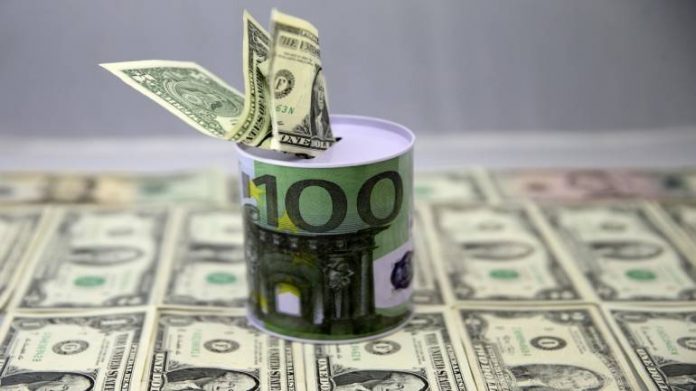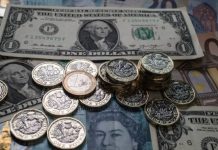
SINGAPORE: The dollar held steady versus its peers on Tuesday, hovering close to its 2019 high as U.S.-Sino trade tensions and global growth worries underpinned the greenback’s safe-haven appeal.
Investors are focusing on high-level trade talks in China this week where Washington is expected to keep pressing Beijing on long-standing demands that it makes sweeping structural reforms to protect American companies’ intellectual property, to end policies aimed at forcing the transfer of technology to Chinese companies and curb industrial subsidies.
This week’s talks come as the world’s two largest economies try to hammer out a deal before a March 1 deadline, after which U.S. tariffs on $200 billion worth of Chinese imports are scheduled to increase to 25 percent from 10 percent.
Financial markets have been roiled by the trade tensions over the past year, with business sentiment taking a hit around the world as the fallout of the U.S.-China dispute disrupted factory activity and hurt global growth.
The greenback rose 0.1 percent against the yen to 110.47 and was a touch higher versus the Swiss franc at 1.0040.
The dollar index was steady at 97.04, after advancing 0.45 percent in the previous session, its largest percentage gain since Jan. 24. The index has risen for eight straight sessions, mainly thanks to a tumbling euro, which has the largest weighting in the index.
The single currency was relatively unchanged at $1.1278 in Asian trade, having lost nearly half a percent on Monday. The euro has weakened for six consecutive sessions, and traders expect further losses now that the crucial psychological support of $1.13 has been broken.
The European Central Bank is expected to maintain a highly accommodative monetary policy this year as growth slows in the eurozone and inflation stays low. Last week, the European Commission sharply cut its forecasts for eurozone growth for this year and next.
Investors are expecting stimulus from the ECB in the form of a cheap loan scheme for banks in the coming months.
Elsewhere, sterling was 0.15 percent firmer at $1.2869, after tumbling 0.75 percent in the previous session. Analysts expect the British pound to remain volatile due to the uncertainty surrounding Brexit.
The British parliament is set to hold a debate on Brexit on Feb. 14 where Prime Minister Theresa May is seeking changes to her deal with Brussels after it was rejected by a record majority in parliament last month.
The Australian dollar, often considered a gauge of global risk appetite, gained around 0.3 percent to $0.7083 as risk sentiment improved on expectations that U.S. lawmakers had reached a tentative deal on border security funding that would avert another partial government shutdown due to start on Saturday.
Traders expect the Aussie to remain under pressure after Reserve Bank of Australia Governor Philip Lowe tempered a long-held tightening bias last week, saying an easing might be just as likely as a hike.
The kiwi dollar was steady at $0.6730. New Zealand’s central bank is expected to leave interest rates unchanged at its policy meeting on Wednesday but may adopt a more dovish tone and cut forecasts, in line with other major central banks as rising global economic risks cloud the outlook.






















